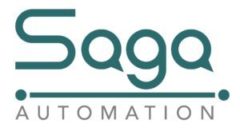Saga Automation has had about 60 new clients over 5 years. And we have seen all levels of automation from very large businesses with 50+ PLCs in one facility to industrial park rollup door businesses with one machine with a PLC in it. However, whenever we meet a new client one of our first questions is about a topic called downtime and disaster recovery. I ask this for two reasons. It is a service offering of Saga Automation and it does give us a few hours of work, but more importantly it is critical to most businesses to not have unnecessarily long business interruption due to their automation programming and I have gotten calls from customers where it is too late, and we can’t recover the program. In that case sometimes we have to reprogram and this can be expensive or impossible depending on the complexity of the machine.
A downtime and/or disaster recovery plan asks questions that address the main issue of:
>>”What happens if your automation equipment (PLC, HMI, VFD, Robot, Servo or Vision system) fails?” <<
- Do you have the programming and configuration backed up?
- Where is it? (Can a disaster or rogue employee cause a problem that is not recoverable?)
- Who will reload the programs and configuration?
- Where and how long will it take to get the parts to get you running again?
A control systems integrator like Saga Automation can help safeguard your automation programming by helping you answer these questions to minimize business interruption risk.
>> Saga performs an audit of your automaton systems to identify all your plc programming, hmi programming and other automation component configurations.
>>We offer to store these files offsite in their backed-up file server and gives client companies their files for safekeeping.
>> Saga can ensure that we have the configuration software needed (which is oftentimes licensed and pricey software) so that we can reload your software if needed.
>> Finally, we assess for you how long the lead time will be on the components should they fail. Sometimes the equipment is even obsolete and no longer available, so you may have to resort to the aftermarket or even a forced modernization if the equipment fails.
This is not meant to be a scare tactic. It is more like buying insurance. We buy insurance in case something happens and hope it does not, but if it does we have limited how much the harm will affect us financially. If you have a downtime/disaster recovery plan in place and execute the preventative actions above, then you can reduce your business interruption if your automation breaks down.

Hello guys! Nice article! Keep it up.